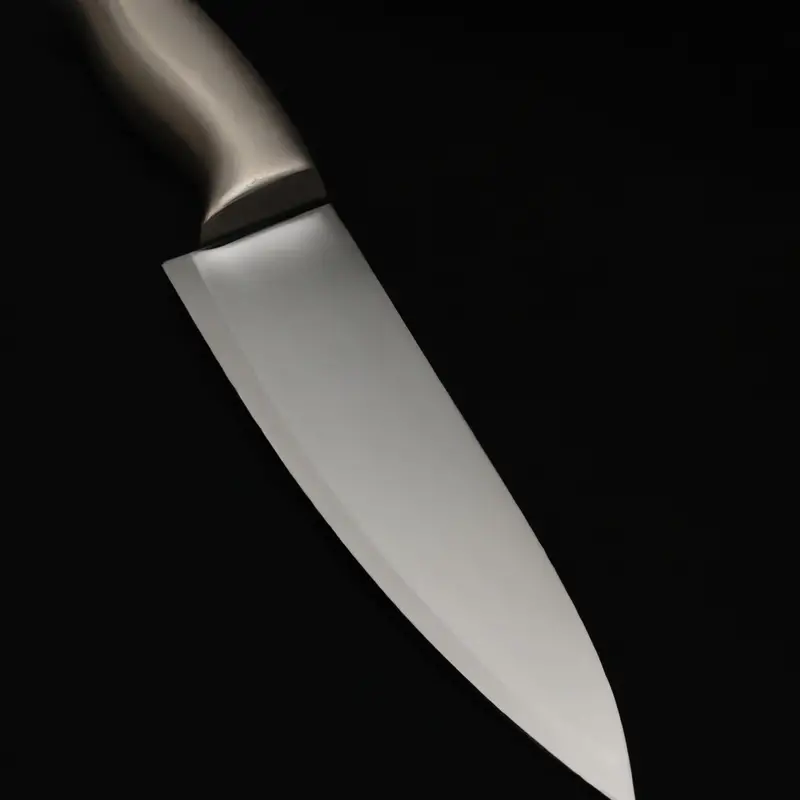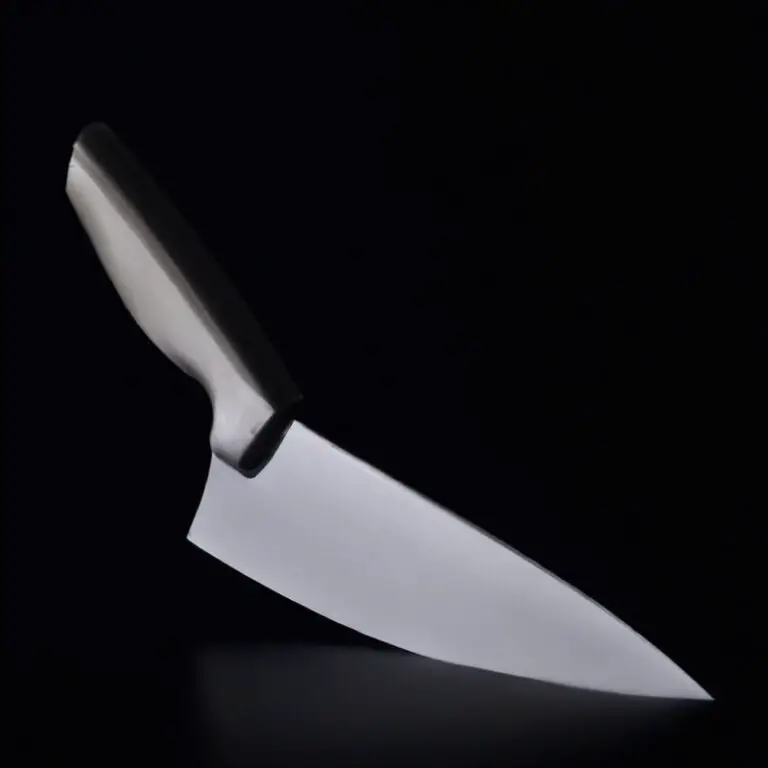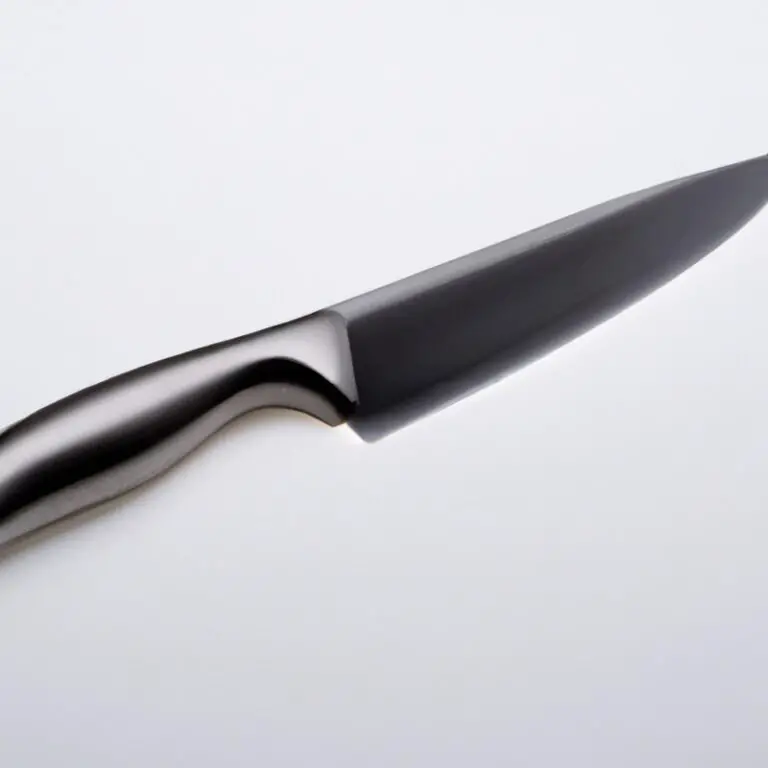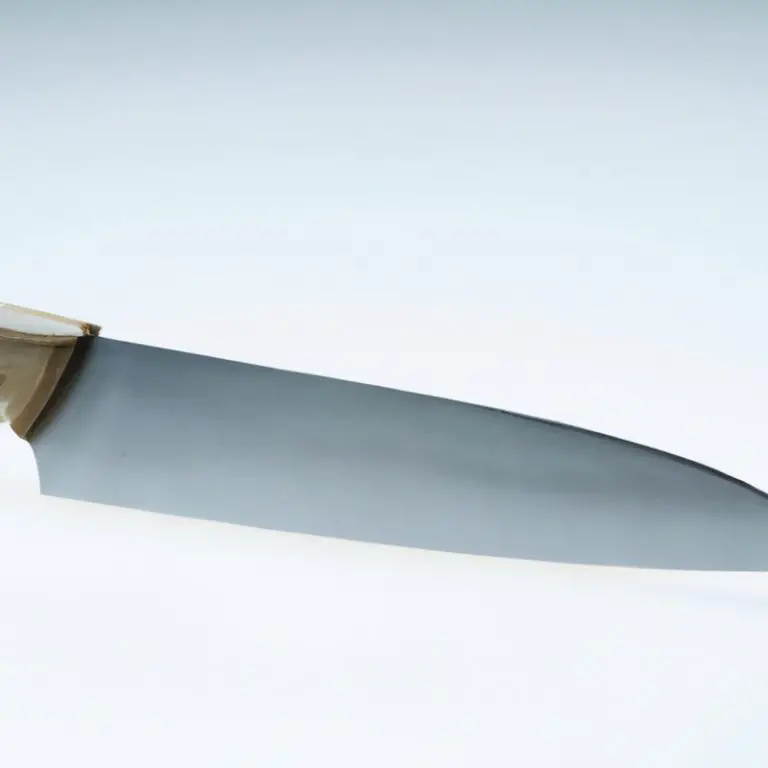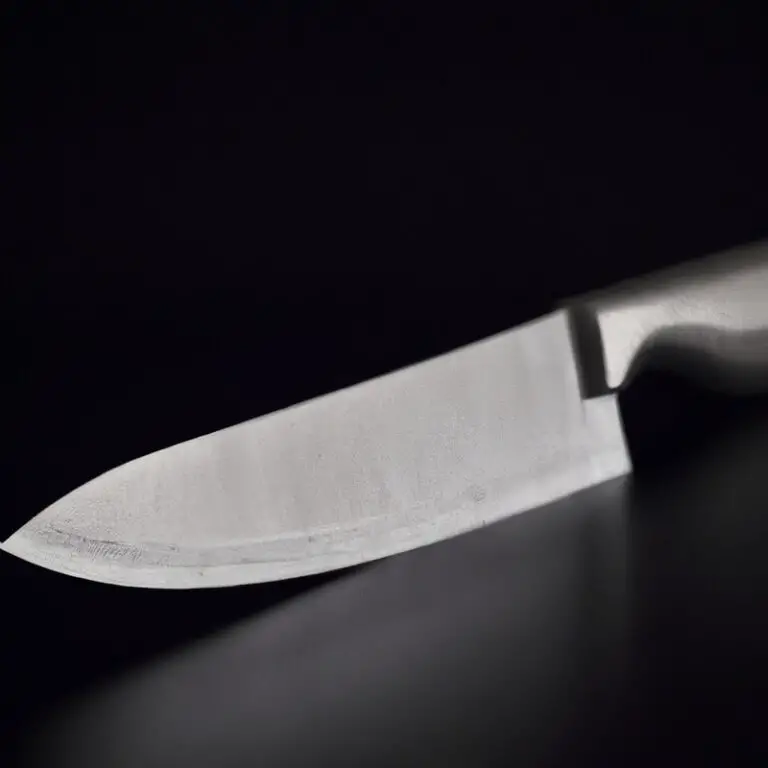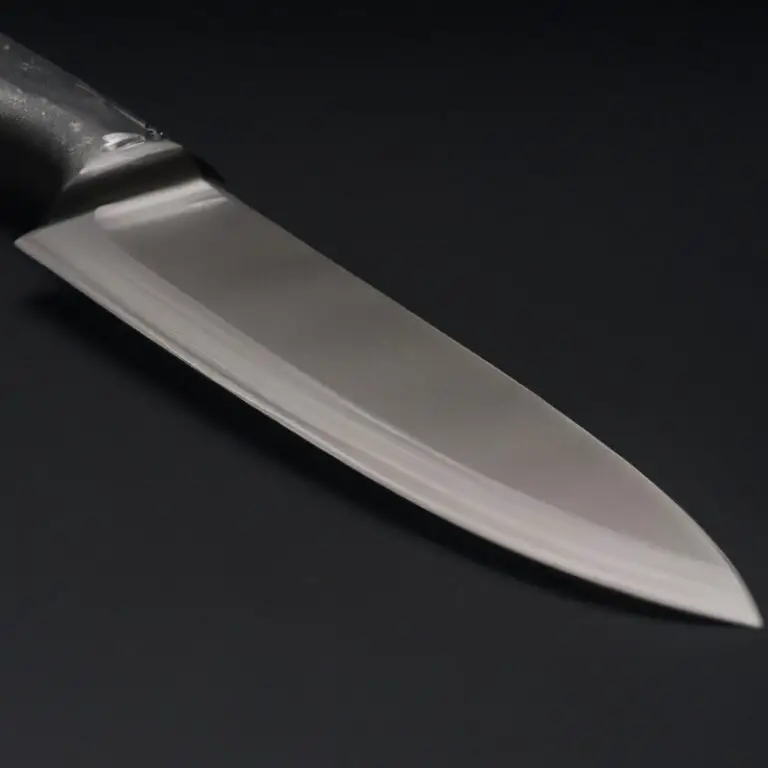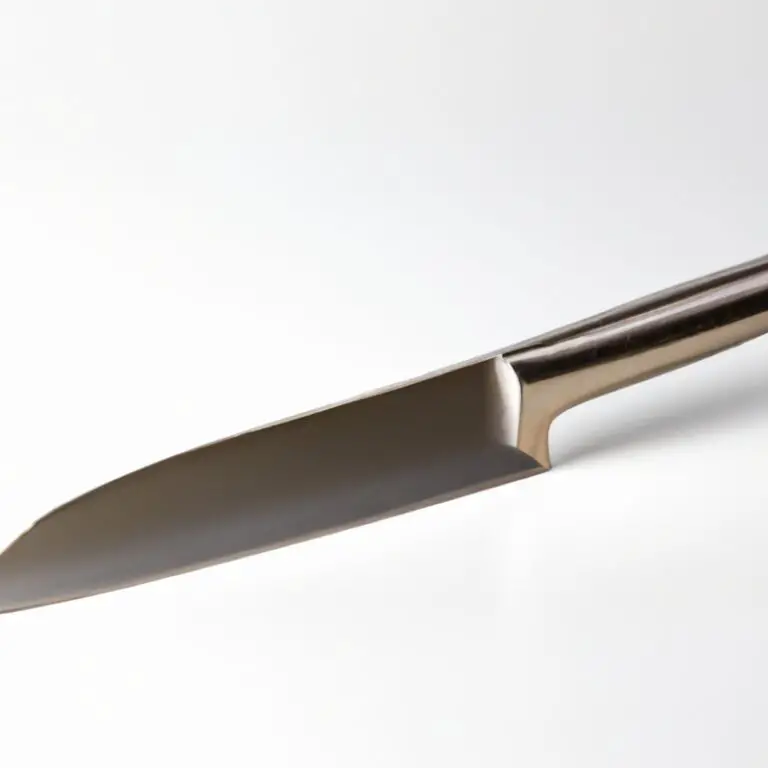How Is a Santoku Knife Different From Other Types Of Knives? Discover Now!
Key Takeaways:
- A Santoku knife is a versatile kitchen tool that combines the functionality of a Western chef’s knife and a Japanese nakiri knife.
- The blade of a Santoku knife is wider and shorter than a typical Western chef’s knife, which enables it to cut through vegetables, meats, and fish with greater precision and control.
- Santoku knives have a unique blade design that features a hollow edge, which helps to prevent food from sticking to the blade while cutting.
- When selecting a Santoku knife, look for high-quality materials such as a forged blade and a comfortable handle for maximum durability and ease of use.
Are you tired of struggling to chop, dice, and slice ingredients with a dull and unwieldy knife? Then it’s time to upgrade to a Santoku knife.
Originating in Japan, this versatile kitchen tool has become increasingly popular thanks to its unique design and cutting techniques.
Unlike Western-style knives, the Santoku knife features a shorter, wider blade with a curved edge that makes precision cuts effortless. But that’s not all.
In this article, we will delve into the anatomy, uses, maintenance, and cultural significance of the Santoku knife, helping you choose the best one for your needs and elevate your cooking game.
| Santoku Knife | Chef’s Knife | Paring Knife | |
|---|---|---|---|
| Blade Length | 5-7 inches | 8-12 inches | 2-4 inches |
| Blade Shape | Flat with a sheep’s foot tip | Curved with a pointed tip | Straight with a pointed tip |
| Blade Thickness | Thinner and lighter | Thicker and heavier | Thin and narrow |
| Primary Use | Vegetables, fruits, and boneless meats | All-purpose | Paring and trimming |
| Price Range | $30-$200 | $50-$300 | $15-$50 |
The history and origin of the Santoku knife and how it differs from Western-style knives
The Santoku knife originated in Japan during the mid-20th century. Its name translates to “three virtues” which refer to its ability to chop, slice, and dice.
The blade typically ranges from 5-8 inches, with a flat edge and a clipped tip.
Compared to Western-style knives, the Santoku knife has a thinner and lighter blade, with a sharper edge and a flatter angle. It’s designed for precision cutting, especially when it comes to vegetables and boneless meats.
While Western-style knives prioritize rocking motion, Santoku knives employ an up-and-down chopping motion.
This technique allows for smoother and more efficient cutting, making them a popular choice among home chefs and professionals.
Understanding the anatomy of a Santoku knife: blade shape, length, and thickness
The Santoku knife is distinct in its blade shape, length, and thickness. Unlike the pointed tip of a traditional Western chef’s knife, the Santoku knife has a flat edge that curves upward to meet the blade’s tip, forming a sheep’s foot shape.
This shape makes it ideal for precise chopping, dicing, and slicing.
It also has a shorter blade length compared to a Western chef’s knife, typically around 7 inches, making it lighter and easier to control. Finally, the thickness of the blade is thinner, allowing for cleaner and more precise cuts.
These features make the Santoku knife a versatile kitchen tool that excels in the preparation of various ingredients, such as vegetables, fish, and meats.
Proper understanding of the anatomy of the Santoku knife is key in becoming proficient with its unique cutting techniques.
The unique cutting techniques that make the Santoku knife ideal for precise chopping, dicing, and slicing
The Santoku knife has unique cutting techniques that make it the perfect tool for precise chopping, dicing, and slicing. Its blade shape enables a straight-down cutting motion that reduces the need for a rocking motion, which is common in Western-style knives.
This means that the Santoku knife is ideal for precision cutting of ingredients like vegetables, meats, and fish.
The flat edge of the knife also aids in dicing foods such as onions and cucumbers. This knife is particularly well-suited for fine slicing because of its thin yet sturdy blade.
The versatility of a Santoku knife for different types of ingredients, from vegetables to meats
One of the greatest advantages of a Santoku knife is its versatility when it comes to different types of ingredients. Unlike many Western-style knives, a Santoku knife is suitable for slicing, dicing, and chopping a variety of foods, from vegetables to meats.
The blade’s unique shape, which features a wider and shorter blade than many other knives, allows for more precise cuts and ultimately a more enjoyable and less frustrating cooking experience.
With a Santoku knife, you can quickly and safely chop vegetables and herbs, slice meat, or even mince garlic with ease. Whether you’re a professional chef or a home cook, the versatility of a Santoku knife makes it an essential tool in any kitchen.
The ergonomic design of the Santoku knife for comfortable and efficient use
The Santoku knife features an ergonomic design that offers comfortable and efficient use. The blade is typically shorter and wider than a Western-style chef’s knife, allowing users to apply more pressure and control during chopping, dicing, and slicing tasks.
The blade is also lightweight and balanced, reducing the risk of hand or wrist fatigue during prolonged use.
Additionally, the handle is designed to fit snugly in the hand, reducing the risk of slipping or injury. This ergonomic design makes the Santoku knife an ideal option for both amateur and professional chefs who prioritize comfort, precision, and efficiency in their cooking tasks.
The importance of proper sharpening and maintenance for maximizing the lifespan and effectiveness of your Santoku knife
Proper sharpening and maintenance are crucial for extending the lifespan and effectiveness of your Santoku knife. A dull blade can damage ingredients and cause accidents due to increased force required for cutting.
Ideally, sharpen your Santoku knife before every use or at least once a week.
Use a honing rod or sharpening stone to remove any nicks or burrs from the blade’s edge. Proper washing, drying, and storage are also essential for maintaining the blade’s quality.
Avoid placing it in the dishwasher or soaking it in water for prolonged periods.
With proper care, a Santoku knife can stay sharp for years, making it a valuable addition to your kitchen arsenal.
How to choose the best Santoku knife for your needs and budget
When choosing the best Santoku knife for your needs and budget, consider the following factors:
- Blade Material: Look for high-quality steel, such as VG-MAX or AUS-10, for durability and sharpness retention.
- Blade Length: 7-8 inch-length is ideal for most uses, but consider the primary ingredients you will be cutting.
- Blade Thickness: A thinner blade offers precision and control for intricate tasks, while a thicker blade is more durable and suited for heavy-duty use.
- Handle Comfort: The handle should be comfortable to grip and balanced, providing a secure hold for extended periods without strain.
- Price: The price of a Santoku knife can range from under $50 to several hundred dollars. Determine your budget according to your needs and consider investing in a higher-quality knife for longer-lasting performance.
Keep in mind that a higher-priced knife does not always guarantee the best quality or sharpening. Additionally, compare the Santoku knife to other Japanese knives, such as Gyuto and Nakiri, before making a final decision.
Comparing the Santoku knife to other Japanese knives, such as the Gyuto and Nakiri
The Santoku knife is often compared to other traditional Japanese knives, such as the Gyuto and Nakiri. The Gyuto has a similar shape to a Western chef’s knife, with a longer and more curved blade for rocking back and forth during chopping.
Meanwhile, the Nakiri has a straighter blade and is specifically designed for precision cuts on vegetables.
In contrast, the Santoku combines the best of both worlds with a versatile, wide blade that is perfect for slicing, dicing, and chopping a variety of ingredients. While all three knives have their own unique strengths, the Santoku’s balanced size and shape make it a great all-purpose kitchen tool.
Tips and tricks for using the Santoku knife properly and safely
To use a Santoku knife properly and safely, here are some essential tips and tricks to keep in mind:
- Grip the handle firmly and keep your fingers away from the blade to avoid injury.
- Use a wooden or plastic cutting board to prevent dulling the blade.
- Cut with a rocking motion, as opposed to a back and forth motion, to maintain precision and prevent injury.
- Use a honing steel or sharpening stone to keep the blade sharp and prevent accidents due to dullness.
- Clean and dry the knife after each use to prevent rusting and damage.
- Do not use the knife to pry open cans or containers, as this can damage the blade.
- Store the knife in a safe and secure place, such as a knife block or magnetic strip, to prevent injury.
By following these tips and tricks, you can ensure that your Santoku knife remains effective and safe to use over time, while also impressing dinner guests with your newfound culinary skills.
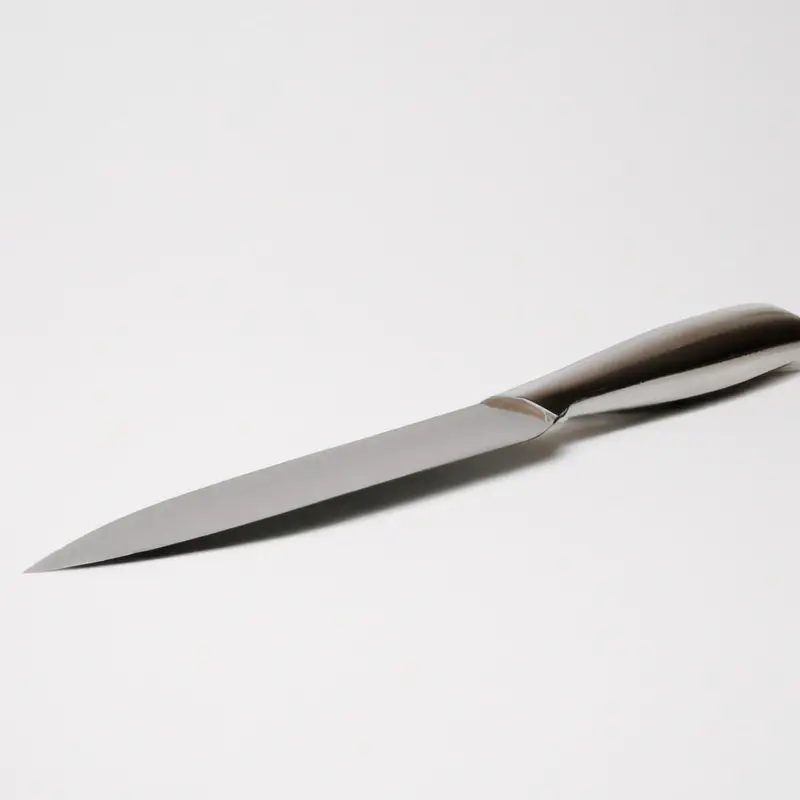
The cultural significance of the Santoku knife in Japanese cuisine and beyond
The Santoku knife holds significant cultural importance in Japanese cuisine. Its name translates to “three virtues,” referring to its ability to cut through meat, fish, and vegetables with ease.
Historically, it was used for preparing sushi and sashimi, as well as other traditional Japanese dishes.
Beyond Japan, the Santoku knife has gained widespread popularity among chefs worldwide due to its versatility and ergonomic design. Its reputation for precise cutting and ease of use has made it a staple in both home and professional kitchens.
In addition to its practical use, the Santoku knife has become a symbol of Japanese craftsmanship and attention to detail.
Its intricate blade design and careful construction are reflective of Japan’s cultural values of precision and mastery. Therefore, owning a Santoku knife is not only a useful tool for cooking but also a representation of quality and tradition.
Its importance in Japanese cuisine and beyond goes beyond its practical use in the kitchen, making it a valuable cultural artifact and a testament to the rich history of Japan.
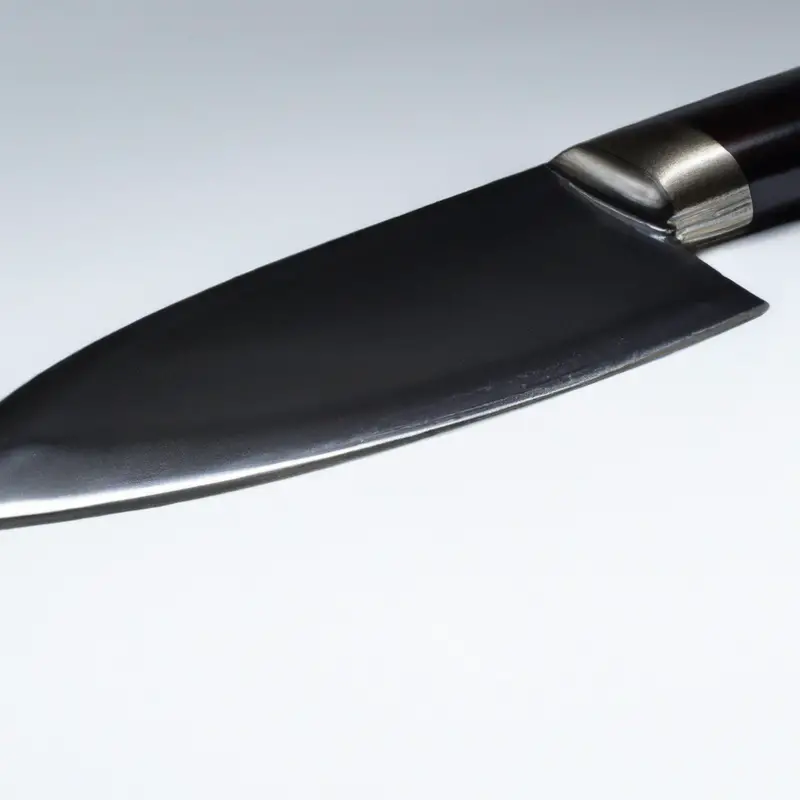
Final Verdict
The Santoku knife is a unique and versatile option for anyone seeking precise, efficient, and comfortable slicing, dicing, and chopping. Its distinctive design and cultural significance make it a must-have in any kitchen, from amateur to professional.
By understanding its anatomy, sharpening and maintenance needs, and proper use techniques, you can maximize the effectiveness and lifespan of your Santoku knife.
Whether you’re a home cook looking to upgrade your cutting game or a chef searching for a reliable and ergonomic tool, the Santoku knife is an excellent choice that will never disappoint. Don’t settle for average knives when you can experience the excellence of the Santoku knife today!

